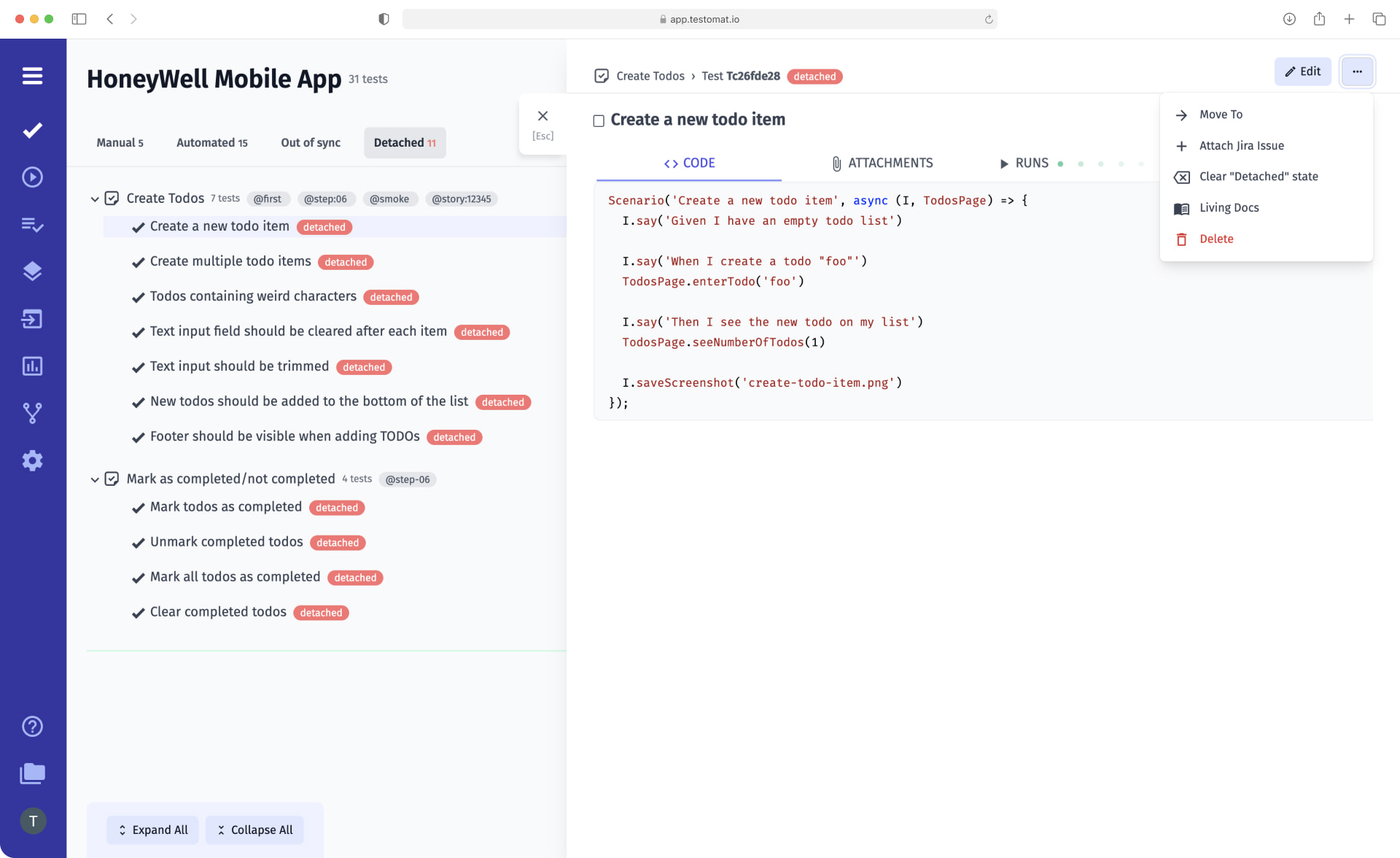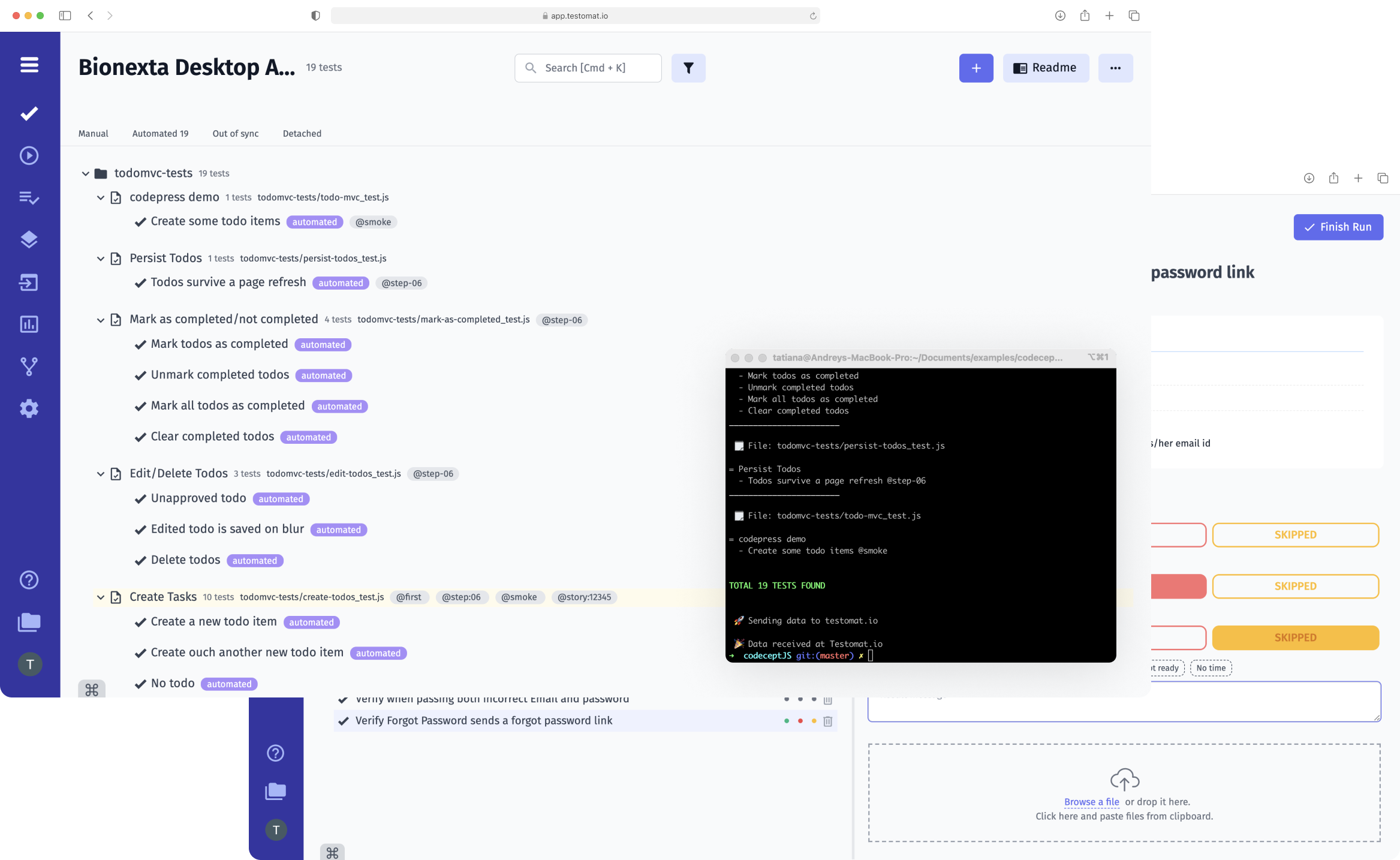
The Detached Status function allows the tester to detect tests that have been removed from the code for some reason. In testomat.io, they will be marked by Detached label. This is a kind of synchronization, which allows you to keep tests up to date in TCMS.
How detached tests recognized in test management
At first, you should import existing tests from the framework into the TCMS. To do this, use the Import Tests From Source Code function to select the desired settings (the framework and programming language), get the command, and paste it into the cmd in the queue file.
If something changes in the code, you must re-import it to synchronize these changes with new ones made into the test management system. Tests that TСMS did not find in the framework get the Detached label, and the user receives a notification: Test was presumably deleted in the source code. Add it on next import or delete from the system. That is, the QA tester realizes that there are tests in test management system that are not in the code, and their task is to figure out whether there really were changes in the test project or tests were deleted by mistake.
If the tests have been deleted on purpose, they must be removed from the test project in the test management system. For this purpose, there is a delete option for Detached tests in the settings.
If an error has occurred and the test cases need to be returned to the test management system, through the button Clear Detached Status all tests will resume in the database.
Benefits of Detached Status for Your Team
- All information in TCMS is always updated according to the source code of the testing framework.
- The Detached feature insures users against irretrievable loss of information thanks to the possibility of restoring erroneously deleted tests.
- It helps to clear the test project and delete irrelevant tests at the push of a button Delete Detached tests.
Other features allow us to keep track of tests:
- Real-time reporting – you can use the TCMS to monitor tests where they are stored in one place, and track test project progress. When at least one test is completed, available to review the test result report to see changes in the software system. And up-to-date information about tests that match the code is the key to properly reporting test results.
- Unlimited test results history – allows QAs to track the history of test changes with the Run Archive or Group Archive features. These ones contain visualized information about when testing was performed and how many tests were passed, failed, or skipped. This allows the tester to clearly assess the area that needs maximum attention.
- Out of sync test cases – the tests in the code that were not deleted completely but only changed are marked as Out of sync and should be re-imported into the test management system to update the data. In this case, Detached tests can be detected, and the QA tester will see that changes were made in the project and decide whether it is reasonable to save them.
- Sync automated tests by IDs – in order to ensure that all changes made in tests into TCMS correlate correctly with the code, they are assigned identifiers (IDs), which are needed for internal communication between TCMS and the framework. The function allows the test management system to provide correct reports of test results and ensures proper CI\CD operation.
- Project Timeline or Pulse – this test management functionality has a central place in the test project. All tests imported from the code are arranged in chronological order. Pulse allows undoing all changes in test cases that were made in error.

